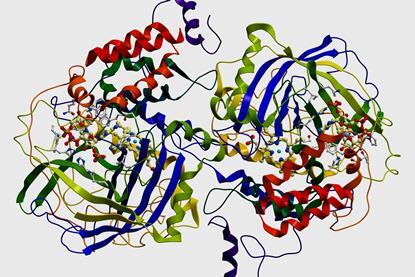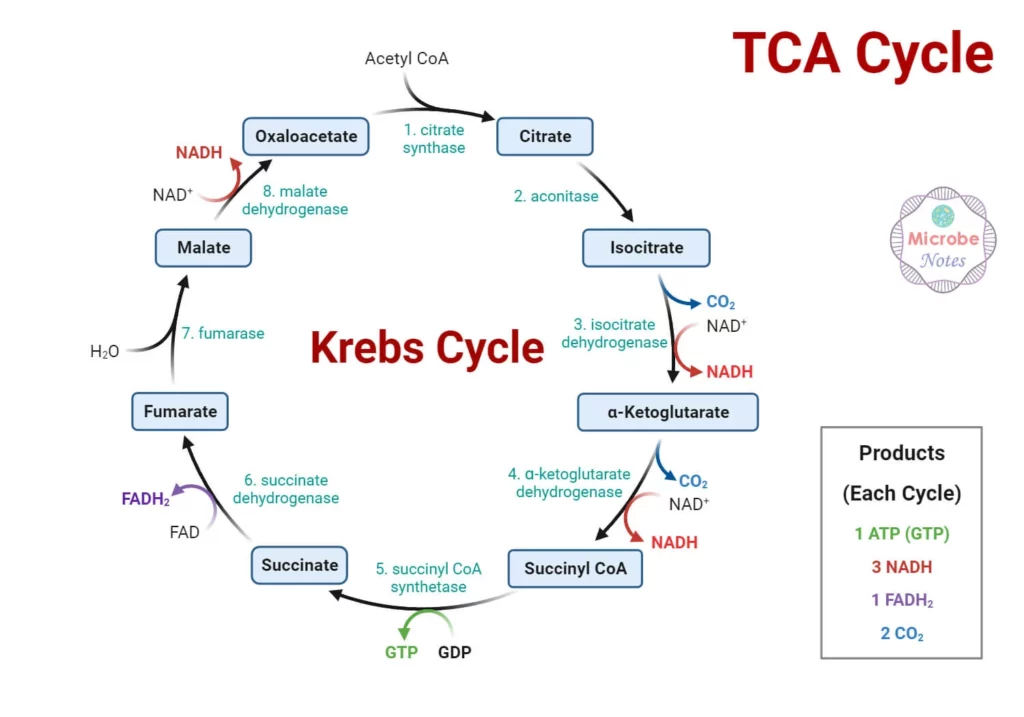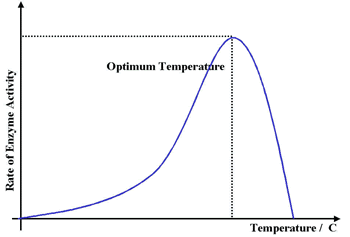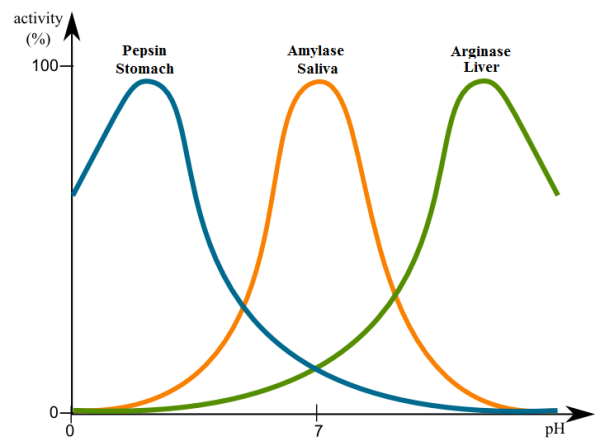C.1 Enzymes and metabolism
Discussion Question: What would be the effect on life if enzymes did not exist?
Enzymes are biological catalysts, that speed up the rates of metabolic reactions by lowering the required activation energy.
Metabolic reactions are the reactions that occur in living cells. They tend to happen in a number of complex steps, each step controlled by an enzyme.
The sum total of all of these ´living reactions´is called metabolism

C1.1.2 Role of Enzymes in Metabolism
Metabolic reactions tend to occur in a number of steps, each step being catalysed by a specific enzyme.

This is the Krebs cycle, the third stage of aerobic respiration. Each step in the cycle of reactions is controlled by a different enzyme.
Discussion question: If a reaction takes place in multiple steps, each one catalysed by an enzyme, is that a better system than a single reaction not catalysed by an enzyme?
C1.1.3 Anabolic and catabolic reactions
Catabolic reactions involve breaking down molecules into smaller parts.
Examples of catabolic reactions involve:
-Digestion of food eg. proteins into amino acids
-Cell respiration. Glucose or lipids are oxidied into carbon dioxide and water
Anabolic reactions build large molecules from smaller ones
Examples of anabolic reacitons involve:
-DNA synthesis
-Protein synthesis
-Storage of extra glucose as glycogen in the liver (animals)
Discussion: Why are anabolic steroids, ´anabolic´?
C1.1.4 Enzymes as globular proteins with an active site for catalysis
The shape o
Enzymes are globular proteins (ball-shaped|) with a precise three dimensional structure that includes an active site.
The substrate (s) will need to combine with this active site to catalyse the specific reaction.
The image below shows catalase. Using your knowledge of proteins, discuss the structure of this enzyme

C1.1.5 Interactions between substrate and active site to allow induced fit binding
The active site of an enzyme is designed for a substrate to bind to it.
This does not mean that the active site is exactly the right shape. It means that if the substrate collides with the enzyme at the right speed and orientation, the shape of the active site will adjust to exactly fit the substrate.
This adjustment is called the induced fit model.
C1.1.6 Role of molecular motion and substrate active site collisions in enzyme catalysis
Mini-Lab : Simulation-Based Investigation: Testing Hypotheses related to enzyne Enzyme Activity
Objective: The objective of this lab is to utilize the Biology Simulations Enzyme Activity simulation (available at https://www.biologysimulations.com/enzymes) to test a hypothesis related to enzyme function.
Procedure:
1. Introduction: Computer simulations that are created using scientific knowledge can be used to test hypothese and can even be used in your IA.
2. Hypothesis Formulation: a. State the hypothesis you will be testing using the Enzyme Activity simulation. Use the writing frame if….then…because and explicitly state your independent and dependent variables.
3. Accessing the Simulation: a. Open a web browser and navigate to https://www.biologysimulations.com/enzymes. b. Familiarize yourself with the simulation interface and available options (play with the settings for a few minutes)
4. Experimental Design: a. Design an experiment within the simulation to test the formulated hypothesis that includes 5 different variants (a variant is a trial of the experiment with a different condition regarding the independent variable (s).
5. Data Collection: a. Run the simulation according to your experimental design. Take screen shots of the graphs that the simulator generates.
6. Analysis: Write two-three bullet points exploring the trends that are shown based on the graphs generated by the simulation.
7. Conclusion: a. Summarize your findings based on the simulation results. b. Discuss whether the results support or refute, or remain neutral regarding the initial hypothesis.
8. Discussion: a. Engage in a class discussion to share findings and insights from the simulation. b. Compare results with peers and discuss any variations in outcomes.
Keypoints:
- The rate at which an enzyme processes a substrate is directly related to the number of successful collisions that occur between the active site of an enzyme and the substrate (s).
- Sometimes the enzyme is embedded in a membrane, which means they cannot move. This happens in the final stages of aerobic respiration.
- Sometimes the substrate is much larger than the enzyme, and the enzyme has to move around the substrate altering parts of it. This happens in DNA replication and transcription.
C1.1.7 Relationships between the structure of the active site, enzyme-substrate specificity and denaturation.
Since enzymes are proteins, they have complex three dimensional shapes that can be altered by extremes of temperature and pH, known as denaturation. Denaturation renders enzymes ineffective.
C1.1.8 Effects of temperature, pH, substrate concentration on the rate of enzyme activity.
The rate at which an enzyme works is called ‘enzyme activity’.
Enzyme activity is affected by:
- temperature
- pH
- substrate concentration
Temperature: As temperature increases, there are more collisions between faster moving enzyme and substrate molecules – making enzyme activity faster. Denaturation starts to occur, and after an optimum temperature (for human enzymes usually 40 C), the activity decreases sharply as the enzyme is denatured. The denaturation is caused by bonds breaking between amino acids.

pH: At a low or a high pH, enzyme activity is low. Enzymes can even be denatured by extreme pH values. Enzyme activity rises to an optimum pH ( for human enzymes usually 7) in the middle. The digestive system enzymes have varying optimum pH values.

Substrate concentration: Enzyme activity increases when there is more substrate available, until a point when all the active sites are occupied (saturation point). After this further increases in substrate concentration will have no effect on enzyme activity.

Discussion questions: How does this match with your own investigations into enzyme activity using the simulation experiment in section C1.1.6?
C1.1.9 Measurements in enzyme catalysed reactions
Measuring the rate of enzyme catalysed reactions usually involves either measuring the rate of disappearance of a reactant over time, or measuring the appearance of a product.
Measuring the rate of enzyme catalysed reactions often involve measuring volume, pressure, mass, color (light absorbance), or pH
Discussion task in pairs: Choose an enzyme catalysed reaction that you know. Consider a way that you might measure the rate of this reaction. Decide upon a list of apparatus that you would need to conduct this experiment. Report to the group.
C1.1.10 Effect of enzymes on enzyme activity
An enzyme can weaken the bonds in a substrate, causing a transition state with a lowered energy state.
Overall, it is important to note that an enzyme does not affect the overall energy change of a reaction. It just reduces the reaction energy.
It might be a useful metaphor to consider that throwing a little alcohol on a woodfire doesn´t give you a hotter fire. It just makes it easier to start the fire.





